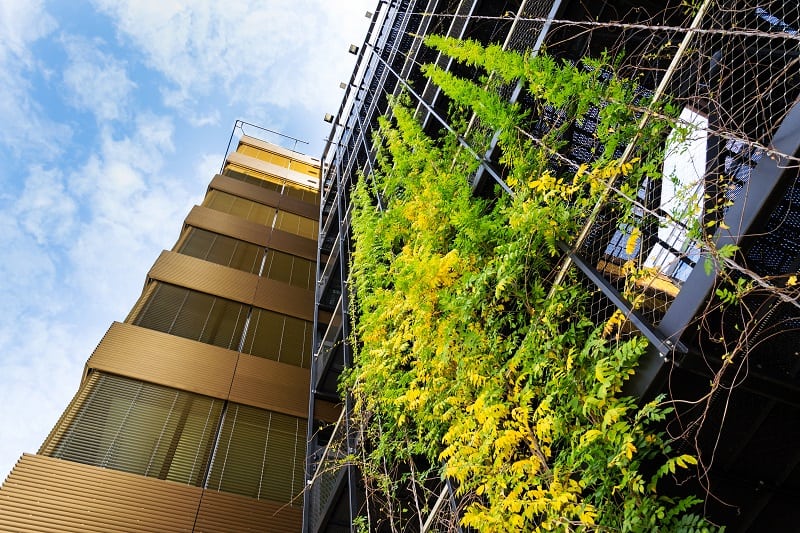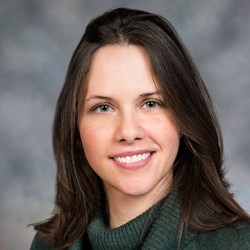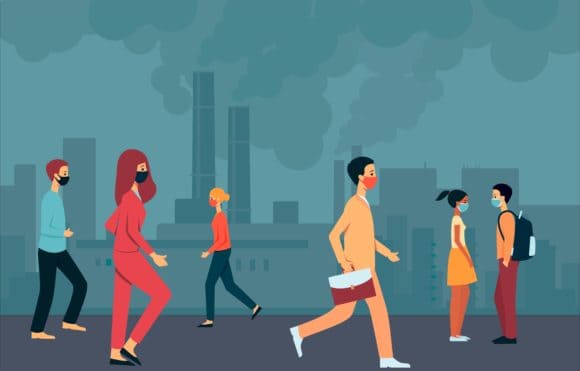Aug 27, 2019 | Climate Change, Environment, Risk and resilience, Young Scientists
By Luiza Toledo, IIASA Science Communication Fellow 2019
2019 YSSP participant Regina Buono investigates how the law can support or impede the use of nature-based solutions and help facilitate adaptation to climate change.
Recognizing the need for a systemic change is the first step to overcoming environmental challenges like climate change. In theory, governance systems can be designed and arranged to facilitate and embrace adaptation to climate change. Developing a legal framework that supports such an adaptation is, however, a big challenge. Learning how to manage the environmental crisis we currently find ourselves in while still being able to grow economically further complicates matters. According to Regina Buono, a participant in this year’s IIASA Young Scientist Summer Program (YSSP), nature-based solutions could be an alternative option that offers a multitude of benefits in terms of how this dual goal of economic growth and sustainability can be achieved. Buono’s research will contribute to IIASA as a partner in the EU Horizon 2020 project, PHUSICOS, which is demonstrating how nature-based solutions can reduce the risk of extreme weather events in rural mountain landscapes.

Outdoor green living wall, vertical garden on modern office building | © Josefkubes | Dreamstime.com
Nature-based solutions are actions to protect, manage, or restore natural ecosystems that address societal challenges, such as water security, pollution, or natural disasters – sometimes simultaneously. These solutions take advantage of the system processes found in nature – such as the water regulation function of wetlands, the allowance of natural space in floodplains to buffer flooding impacts, water storage in recharged aquifers, or carbon storage in prairies – to tackle environmental problems. This concept is now widely used to reframe policy debates on biodiversity conservation, climate change adaptation and mitigation strategies, urban resilience, as well as the sustainable use of natural resources.
As part of her research, Buono is exploring how the law can support or impede the use of nature-based solutions and considering how we can make legal systems more adaptive so they can help facilitate societal adaptation to a more uncertain world under ongoing and future climate change.
“My research is about using the law as a tool that works for us, rather than one that, because of its historic interest in stability, gets in the way,” she says.

Regina Buono, YSSP participant. | © Buono
Buono started her career as a lawyer based in the US. In her first job she was assigned to work with water issues and according to her, it was “love at first sight”. Following that first assignment, she continued to work on finding market-based solutions for issues related to endangered species. She decided to pursue a PhD in public policy in 2016, and soon after was asked to join the external advisory board to the Nature Insurance Value: Assessment and Demonstration (NAIAD) project in Europe. While attending the first meeting, she realized that there were no lawyers or legal scholars among the project researchers. As a lawyer, she could see that there was a gap in understanding how law and regulations would impact the uptake, development, and proliferation of nature-based solutions.
Working with NAIAD, she developed her PhD dissertation to address this gap and advance understanding around the role of the law in nature-based solutions, both in terms of governance in implementation and practice and the potential for governance innovation that better supports and promotes future adaptation.
“My YSSP project here at IIASA focuses on the city of Valladolid, Spain, and examines the legal context around the implementation of a collection of nature-based solution projects. I am trying to draw insights from these that could perhaps also be applied to other cases,” she explains.
Buono is doing a critical qualitative study that integrates analyses of interviews and policy documents using NVivo, a qualitative data analysis computer software package specifically designed to work with very rich text-based and/or multimedia information, together with legal analysis. She says that there is still a lot of work to be done to adapt to climate change and an interdisciplinary cross-sector effort will be necessary.
The preliminary results from her YSSP research point to a number of constraints and facilitating factors related to law and regulation. She says that the lack of explicit legal authorization for nature-based solutions that she identified in her study, strict water quality regulations, and bureaucratic hurdles could be some of the factors that constrain the implementation of nature-based solutions. However, flexibility in the law and a polycentric governance structure was identified as facilitating factors that encourage local entities to opt for nature-based solutions.
Buono hopes that her research will help decision makers to assess and address legal components that guide, structure, or impede the use of nature-based solutions, and to consider how the law could be evolved to create a more enabling environment for more adaptive governance arrangements that would better support nature-based solutions.
“Our policies and infrastructure are going to have to change to be able to deal with the impacts that we are already experiencing. Nature-based solutions and a shift toward adaptive governance could help us navigate more gracefully in these important transitions,” she concludes.
Note: This article gives the views of the author, and not the position of the Nexus blog, nor of the International Institute for Applied Systems Analysis.
Aug 21, 2019 | Air Pollution, Economics, Environment, Health, Young Scientists
By Luiza Toledo, IIASA Science Communication Fellow 2019
2019 YSSP participant Muye Ru investigates the main health impacts of air pollution and what this means for the economy and social development of a country.

© Sabelskaya | Dreamstime.com
Air pollution is one of the greatest environmental health risks of our time. It is the second most common cause of non-communicable diseases like stroke, cancer, and heart disease, and it annually leads to around seven million premature deaths.
According to the World Health Organization (WHO), almost 90% of people worldwide breathe polluted air. Even though we can say that air pollution is impartial, affecting people regardless of gender, race, social class, or economic status, the burden of ill health caused by air pollution primarily affects middle and low-income cities and marginalized populations. The economic cost of air pollution and its impacts on health is known as non-market costs and includes the monetized welfare costs of mortality (premature deaths), and of the disutility of illness (pain and suffering).

Muye Ru, YSSP participant. © Ru
Muye Ru, a 2019 Young Scientist Summer Program (YSSP) participant, is studying the main health impacts of air pollution and what this means for the economy and social development of a country. Her project will establish a methodology based on meta-analysis, to estimate the economic costs of selected morbidity outcomes of exposure to air pollution in a population, and test its application at various geographical scales (national, regional, and global).
“The idea behind my work is that bad air quality causes a burden for societies. We know that many people will die or be disabled because of it, but we don’t have a very good understanding of exactly what the social and economic cost of that is,” explains Ru.
It is easy to grasp that the burden of sick and disabled people will affect the economy of a country. For example, imagine a scenario where a family member is diagnosed with lung cancer. The illness will most probably influence the entire family in terms of loss of income when the person is unable to work due to his/her illness, or reduced funds available for savings and necessities like food and utilities due to the cost of treatment.
Ru’s project specifically focuses on the rate and duration of air pollution related-diseases in populations. According to her, this rate is extremely important once you start studying the high economic losses and social disturbances caused by illness and healthcare expenditures.
“It’s about how people are disabled, the effect of this burden on their lives, as well as how these changes in their lives are impacting the economy,” she says.
Ru hopes that her work will be useful to policymakers in creating and applying policies to combat air pollution that will lead to multiple benefits for the economy, the environment, and human health. She wants her research to make people more aware of how they are contributing to air pollution and how the cost of it affects everyone’s lives.
Note: This article gives the views of the author, and not the position of the Nexus blog, nor of the International Institute for Applied Systems Analysis.
Jul 26, 2019 | Environment, Systems Analysis, Young Scientists
By Luiza Toledo, IIASA Science Communication Fellow 2019
2019 YSSP participant Roope Kaaronen investigates how changes in the urban environment affect people’s behavior and whether they will find it easy to engage in sustainable behavior in different environments.
Technological and industrial advances in many sectors have made our lives easier, but they have also contributed to a less sustainable way of life. From the industrial revolution to the present day, CO2 emissions have increased by 40% and about 95% of this increase can be attributed to human actions. We can therefore say that our actions shape the environment we live in. But how does the environment we live in in turn shape our attitudes and behavior?
Apart from the vast amount of information available to us and an increasing awareness of more sustainable consumption, our society still has a growing carbon footprint, which means that attitudes around sustainability are not really translating into behavior. There is a gap between having environmental knowledge and environmental awareness, and displaying pro-environmental behavior. Apparently, the answer to translating attitudes into behavior could have more to do with design than awareness.

Roope Kaaronen, YSSP participant. © Kaaronen
Roope Kaaronen, a member of this year’s IIASA Young Scientists Summer Program (YSSP) cohort, has made it his goal to study behavior change and the adoption of sustainable habits. His project investigates how changes in the urban environment will affect people’s behavior and whether people will find it easy to engage in sustainable behavior in different environments. He is looking at how pro-environmental behavior patterns emerge from processes of social learning (such as teaching and imitation), habituation, and niche construction (a process where agents shape the environment they act in).
“I am particularly interested in how the physical environment shapes our behaviors, because people often assume that they have a pro-environmental attitude or values, and that this automatically translates into sustainable behavior. Research however shows that this is often not the case. So actually, the physical environment is more important in determining how we behave than we think,” he explains.
For instance, suppose that you would like to start recycling more but your city doesn’t have a proper selective waste collection system. Because the infrastructure needed to promote pro-environmental behavior is missing, this can lead to feelings of frustration and hopelessness, which could in turn cause people to give up on even trying to engage in the behaviors that could lead to more sustainable outcomes.
Kaaronen uses agent-based modeling in his research to model the cultural evolution of sustainable behavior patterns. The idea is to study how opportunities for action can have self-reinforcing effects on behavior. He included agents who move on a “landscape of affordances” in his model, and these agents are connected to each other in a social network. In this context, the term “agents” represents individuals or groups in society.
Social psychology describes pro-environmental behavior as conscious actions made by an individual to minimize the negative impact of human activities on the environment. For Kaaronen, this means that we can only achieve sustainable goals if we change our behaviors or habits very quickly.
“I think that it’s not realistic to expect that technology will solve all our problems. We will have to start behaving differently,” he says.
Unfortunately, people very often assume that individuals’ actions don’t have as much impact as collective actions, leading them to postpone their own pro-environmental behaviors. There have been a lot of discussion in the media around whether one person’s attitude could have an impact on the environment, in other words, should the focus be on each individual making changes in the way they live, or should the focus be on whole systems changing. To Kaaronen, these two approaches are connected.
“Systems emerge from individuals and their collective interactions. As we are social animals, our actions are inevitably copied and imitated by other people. This means that a person who has a lot of influence will have many people copying them. In other words, whenever we talk about private environmental behavior, such as recycling or using public transport rather than driving a car, we tend to think that this is just our personal behavior, but of course, our choices form part of a much bigger system,” says Kaaronen.

Woman helps clean the beach of garbage. © Freemanhan2011 | Dreamstime.com
We should be aware that we need politicians to make our pro-environmental choices as easy as possible. As individuals, we have responsibilities because we are part of the social system, but it is up to the political system to encourage this kind of behavior on a larger scale.
In 2007, the Danish government developed a strategy that prioritized bicycling as method of transport in Copenhagen. Since then, the city has seen a rapid increase in the number of people cycling, showing that affordance is important to promoting behavior change. Kaaronen’s model is able to reproduce patterns of behavior change, such as the case of Copenhagen.
“I think in terms of policy, what I am doing is quite applicable in urban design. What I am trying to show is that if we make sustainable behavior easy and lucrative, this can lead to long lasting and self-reinforcing effects on the emergence of sustainable cultures,” he comments.
The advent of social media has made it easy to influence people’s attitudes and behavior. The model that Kaaronen is using also illustrates how behavior change can spread through tightly knit social networks, and how social learning in networks can have self-reinforcing effects on behavior change. He says that we should use this tool to spread awareness about sustainable habits and initiate cultural evolution towards sustainable societies. In terms of behavior, living by example is very important, since it is necessary to show that living a sustainable life is both possible and enjoyable. Kaaronen himself lives this philosophy as he doesn’t drive and tries not to eat meat. He also stopped flying two years ago.
“I am just travelling on the ground right now. It is part of a campaign in the academic environment called #FlyingLess. Buses and trains can take you to interesting places, but it of course takes up a lot of time and I realize that not everyone can do this because they live in places that aren’t well connected.”
We are so used to unsustainable forms of behavior like constantly driving, flying, and consuming meat, but the world needs to realize that this way of living cannot last forever. It is unsustainable. Even though it may appear challenging to change our behavior, Kaaronen’s research offers hope to keep believing that it is possible to change our unsustainable behavior and achieve a sustainable society and environment.
“I think it is important to show that these things are actually possible. We can reach a tipping point towards sustainable systems if enough people just start practicing what they preach,” he concludes.
Note: This article gives the views of the author, and not the position of the Nexus blog, nor of the International Institute for Applied Systems Analysis.







You must be logged in to post a comment.